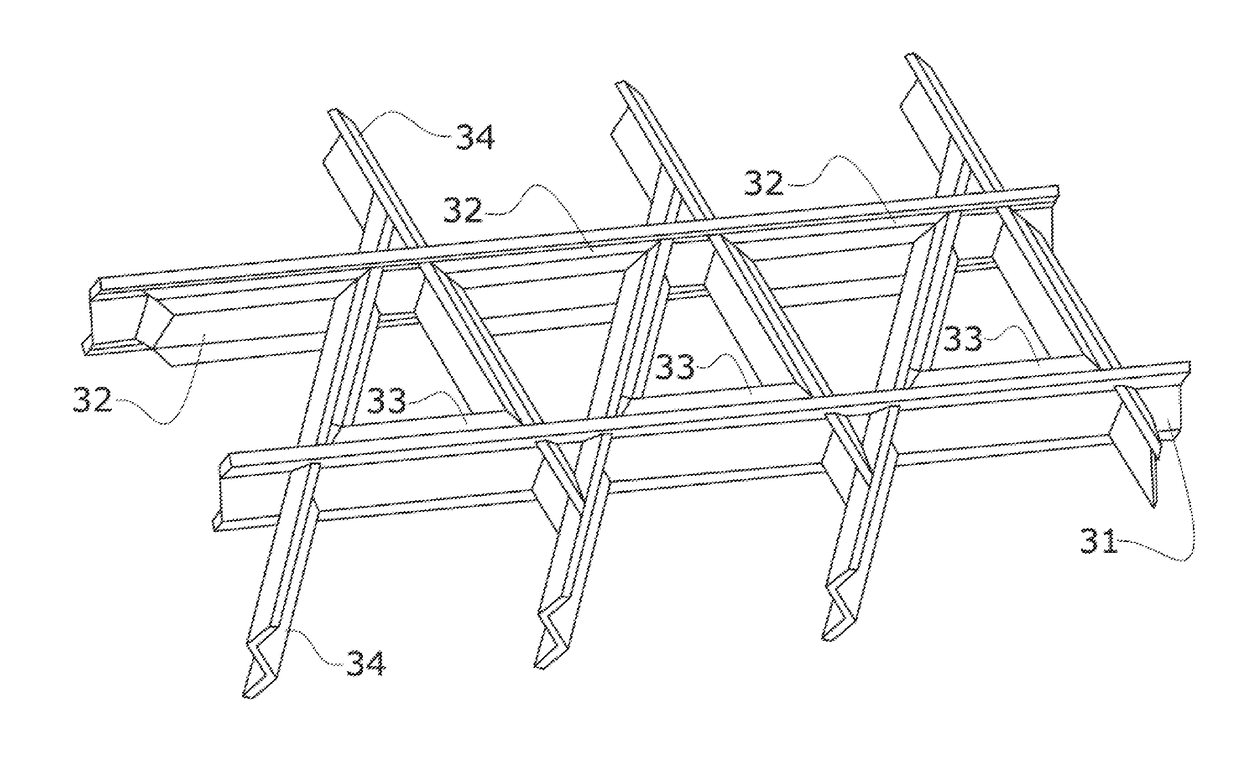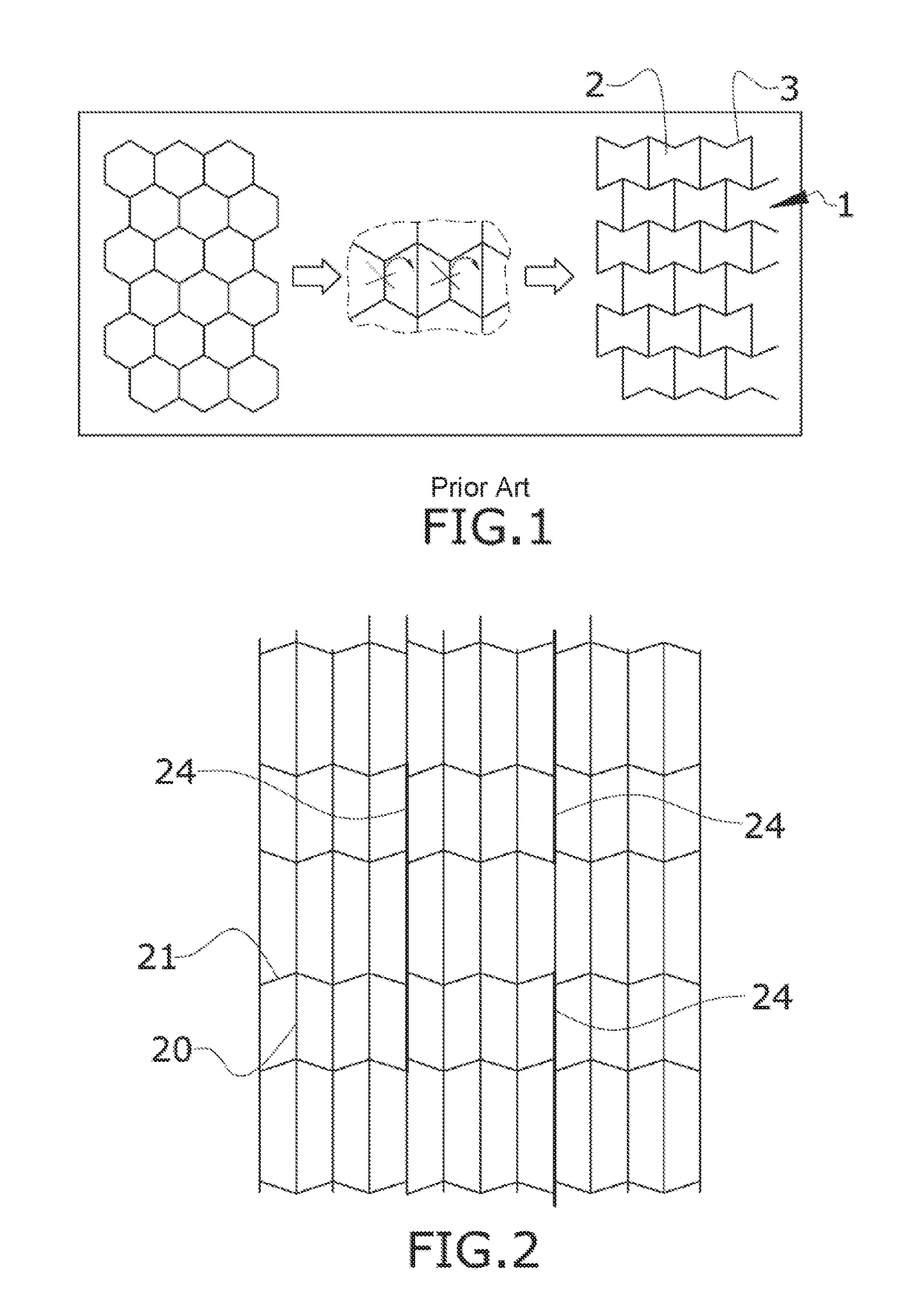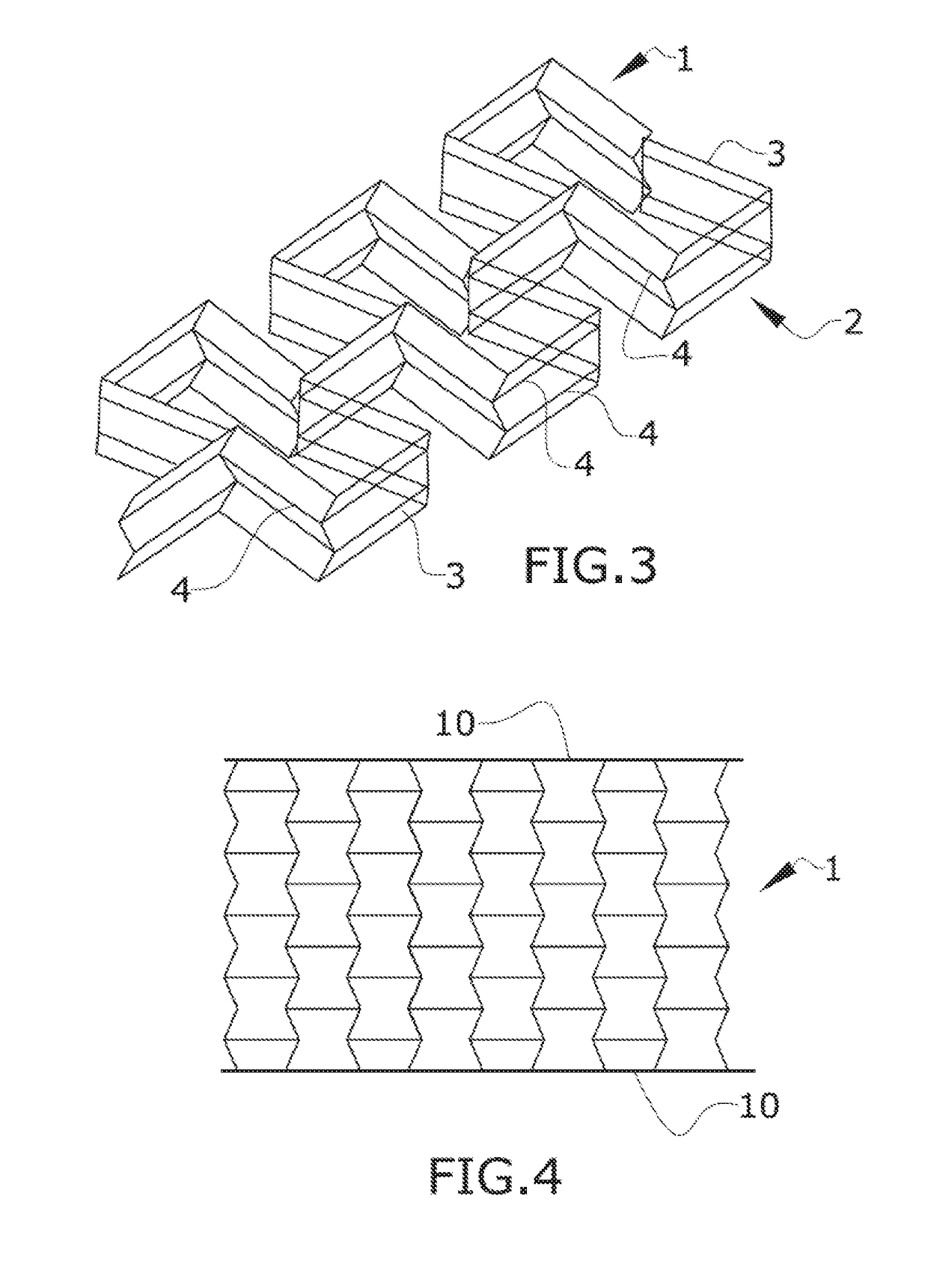Three dimensional auxetic structure, manufacturing method and tooling
a manufacturing method and auxetic technology, applied in the direction of machines/engines, fuselage bulkheads, synthetic resin layered products, etc., can solve the problem of increasing the size in the transverse dimension, and achieve the effect of high impact energy absorption
- Summary
- Abstract
- Description
- Claims
- Application Information
AI Technical Summary
Benefits of technology
Problems solved by technology
Method used
Image
Examples
first embodiment
[0040]FIG. 5 discloses a sectional view of a sandwich panel comprising a first embodiment having a three-dimensional auxetic core structure according to an embodiment of the invention in which the structure is located with the hollow direction of the cells (2) perpendicular to the upper and lower sandwich panels (10). When these sandwich panels are subjected to compression forces normal to the panels (10), the sandwich core tends to contract on the other two directions, generating a condensation of material on the impact point. This condensation of material provides additional capability to resist impact and penetration normal to the sandwich panel (10).
[0041]Another advantage of this core is that the failure of the cell walls (3) is more progressive and transmits deformation to a larger part of the surrounding structure, so the cell walls are able to absorb more energy than the case when the cell walls (3) are not folded. On the conventional core without folded cell walls (3), they...
second embodiment
[0043]FIG. 4 discloses a sectional view of a sandwich panel comprising a second embodiment having a three-dimensional auxetic structure according to an embodiment of the invention in which the structure is located with the hollow direction of the cells (2) parallel to the upper and lower sandwich panels (10). This embodiment provides the additional advantage of not generating closed cells in between the sandwich panels allowing a better drainage of possible water ingested by the sandwich core.
[0044]FIGS. 6, 7 and 8 show possible applications to an aircraft:
[0045]Fuselage and empennage skins shielding against engine debris and other impact threats.
[0046]Lifting surface LE shielding against bird and other impact threats.
[0047]Sandwich can be just a panel surrounding the perimeter of aero dynamic profile or can cover the full cavity of the profile section or part of the profile section (LE, box or TE). The proposed core is able to adapt to thickness variations of the sandwich due to th...
PUM
 Login to View More
Login to View More Abstract
Description
Claims
Application Information
 Login to View More
Login to View More - R&D Engineer
- R&D Manager
- IP Professional
- Industry Leading Data Capabilities
- Powerful AI technology
- Patent DNA Extraction
Browse by: Latest US Patents, China's latest patents, Technical Efficacy Thesaurus, Application Domain, Technology Topic, Popular Technical Reports.
© 2024 PatSnap. All rights reserved.Legal|Privacy policy|Modern Slavery Act Transparency Statement|Sitemap|About US| Contact US: help@patsnap.com










